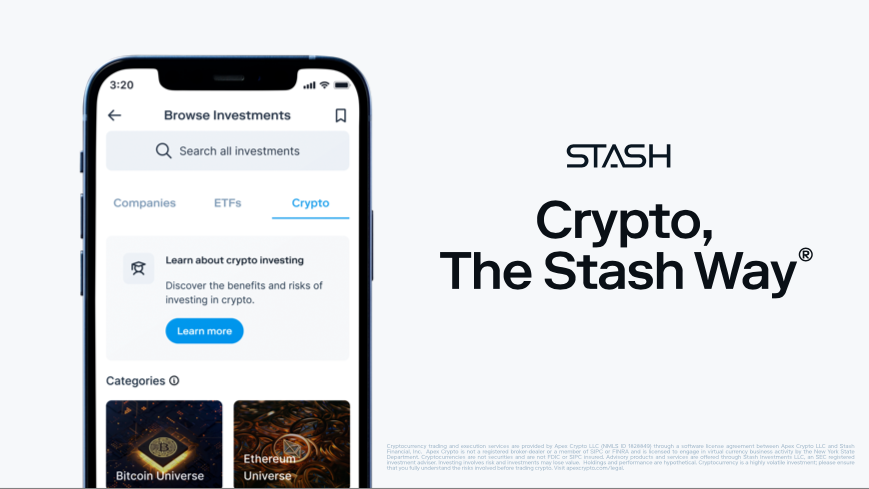Investment app Stash adds crypto offerings, passes $125 million in annual revenue • TechCrunch
The startup is taking its long-term approach to digital assets versus trading

The investment app Stash, which last raised $125 million from investors in a Series G round last year, is adding crypto to the set of products it offers its 2 million users. The startup sees itself as different from its competitors because of its focus on cultivating customers who are long-term investors rather than encouraging more frequent, riskier trading for short-term profit, Ed Robinson, Stash co-founder and president, told TechCrunch in a exclusive interview.
The company, valued at $1.4 billion during its Series G round of fundraising, also shared its latest annual revenue figure with TechCrunch, which Robinson said amounts to $125 million today. Deposits on the platform have grown by 30% in the past year, and it has nearly $3 billion in assets under management today, according to a company spokesperson. That’s up from an AUM of $1 billion in April 2020, according to previous TechCrunch reporting.

Stash’s new crypto offering Image credit: Stash
For its crypto offering, the company sticks to what Robinson calls a “curated” approach, allowing customers to buy and sell eight different cryptocurrencies on the platform – Bitcoin, Bitcoin Cash, Chainlink, Ethereum, Avalanche, Ethereum Classic, Solana and Uniswap.
“We don’t have a wholesale approach of listing hundreds or thousands of cryptocurrencies on the platform. It’s this very small curated list with education and railings around it, and we think we’re offering our customers the more established cryptocurrencies that have a long-term use case associated with themselves, Robinson said.
Robinson said the offering has been in the works for over a year and added that the company has no immediate plans to expand the list of digital currencies on offer because it wants to maintain its focus on what it sees as high-quality assets. Contrasting Stash’s approach with that of other crypto investment platforms, he said:
“It’s not about monetizing the transaction revenue … 80% of our revenue comes through the subscription fee of $3 a month or $9 a month. In these tiers, you get access to all the investment products, personal retirement accounts for your children, you get a banking product to access stock rewards, and you get life insurance.”
With Stash’s new crypto offering, customers won’t be able to store their own crypto in a wallet, but will be able to buy and sell their assets 24/7, much like on an app like Coinbase, although chief investment officer Doug Feldman told TechCrunch that a crypto wallet launch isn’t necessarily excluded in the future. Currently, the company works with Apex Crypto as a manager.
“We believe in crypto. We believe in the underlying blockchain technology, and we see a future state — I don’t know if the future state is five years from now or 10 years from now or 20 years from now — with these technologies and applications that are based on these technologies are ubiquitous in our everyday lives. So what we wanted to do is allow our customers to get small exposure in a measured way to investing in crypto,” said Feldman.
As for the railings, the Stash app will show pop-ups to customers every time they try to make a crypto transaction, showing them what percentage of their total portfolio is at stake. It will also make recommendations to clients on what percentage of crypto they should hold in their portfolios based on a risk tolerance survey they answer when they join the platform. Investors on Stash will also have to go through a mandatory training on the platform before interacting with crypto.
Feldman said that even for the most risk-tolerant investor on Stash, the maximum exposure to crypto the platform recommends is 6% of an investor’s total portfolio.
“We understand that it is a volatile asset class. I can’t tell you if the crypto market is going to go down 20% in the next month… but we have a firm belief that in the longer term, [crypto] will be a big part of the ecosystem, Feldman said. Having a small amount of crypto exposure, he added, will help Stash customers capture some of the asset class’ potential long-term upside.
Feldman attributes the company’s recent growth to its long-term approach that discourages trading.
“We’re continuing to grow, we’re continuing to add subscribers, our revenue is the highest by a wide margin it’s ever been. And that’s because we’re playing the long game with our customers,” Feldman said.


